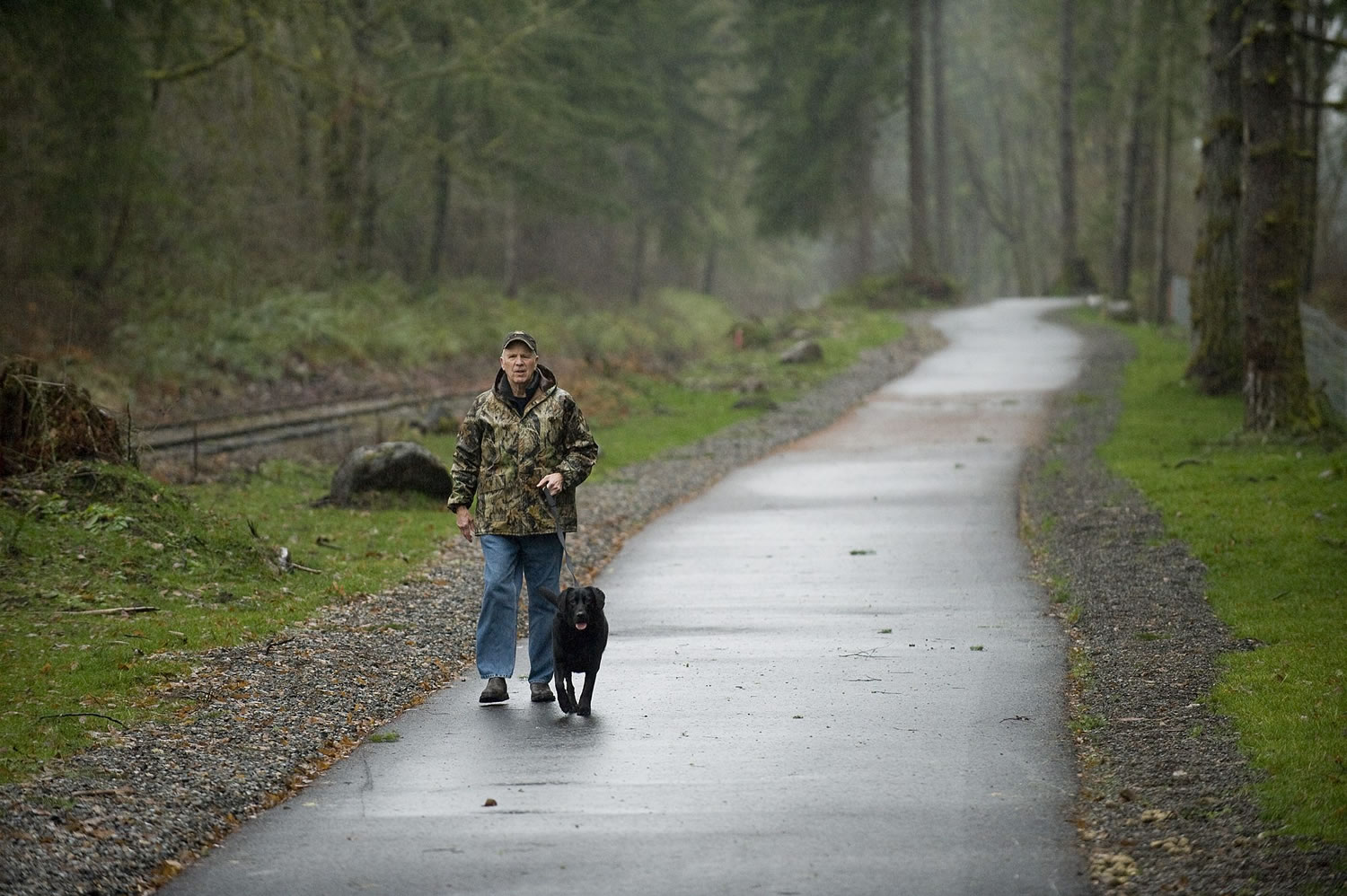Costs and funding sources for Chelatchie Prairie Railroad Trail:
Master plan: $228,304 (federal transportation enhancement grant)
Design/engineering/permitting: $210,987 (federal transportation grant, state recreation grant)
Right-of-way: $39,650 (local real estate excise tax revenue)
Construction contract: $480,000* (state, local)
Construction management/inspection: $71,192 (state, local)
TOTAL: $1,030,133
- Estimate; final amount still being negotiated.
The sign at the Chelatchie Prairie Railroad Trail declares it to be nine-tenths of a mile. County officials later clarified it to be slightly longer — 5,257 feet, just 23 feet short of a mile — but let’s just round up and call it a mile.
Then add up what Clark County has spent so far on the railroad trail project, and call it a million-dollar mile.
The $1 million includes a $228,304 federal grant which paid for a study that launched the entire 33-mile project. The first paved mile, from design to final inspection, cost $801,829, for a total of $1,030,133.
The county acknowledges the first segment was more expensive than anticipated, but the price tag hasn’t provoked uniform reactions.



